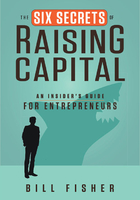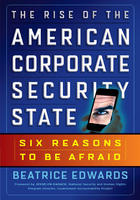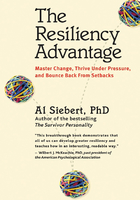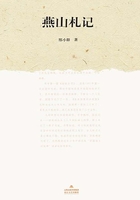Prologue
Open Space Technology is, at the very least, a new way to hold better meetings. The normative experience is that groups, large and small (from five to one thousand members), self-organize to effectively deal with hugely complex issues in a very short time. Overt facilitation is minimal to nonexistent, and preplanning, so far as the agenda is concerned, never happens.
In a word, Open Space is fast, economical, and effective, but it is more than a mega-monster-meeting-manager. For me, it is a metaphor for life and a means to navigate our curious environment as we approach the millennium. In effect, Open Space has become a natural laboratory in which to perceive and explore the emerging potential of our common humanity in a transforming world. The starting point may be better meetings, but the endpoint is richer ways of being together in that wonderful thing we call organization.
The emerging interest in Whole Systems Interventions (sometimes referred to as Large Systems Interventions) has recently provided a useful context for the discussion of Open Space. The genesis of this interest is a growing realization that efforts toward organizational change, when addressed at the level of the individual or even small groups, move too slowly to keep pace with today's challenges. By the time all members of an organization have been run through whatever change process is being utilized, the world has changed once again. We have been dealt that wonderful card telling us, “Return to Start.”
A useful alternative appears to be to get the whole system in one room at the same time, thereby accomplishing in a short period what might ordinarily take years. In order to do this, approaches other than traditional are essential, in large part because traditional approaches were designed for individuals and small groups. In response to today's need, a number of new methods have appeared, such as Future Search, Real Time Strategic Change, Simu-Real, and of course, Open Space Technology.
Billye Alban and Barbara Bunker have chronicled this phenomenon in Large Group Interventions: Engaging the Whole System for Rapid Change (Jossey-Bass, 1997). Each of the new approaches has similarities and differences, and no one approach is useful or effective in all situations. I leave the essential “compare and contrast” in the capable hands of these authors, reserving for myself the only task I feel competent to perform: telling the story of Open Space as I have experienced it.
My name is closely associated with Open Space, which might lead people to assume that I designed it with infinite patience and great care. This would be an error. As I see it, Open Space has always existed, or it has recently emerged by itself. My privilege has been simply to stumble upon it.
This discovery has not been a solo act. Indeed, there are literally thousands of people around the world who, over a period of a dozen years, have made substantive contributions to the discovery of Open Space either as practitioners, participants, or just onlookers. This book is a testimony to them, for in truth the discovery has been, and remains, a collaborative one.
What follows is essentially a personal account of that collaborative journey. It may therefore be useful to offer a brief autobiography, indicating some of the paths and byways that subsequently have become formative to my understanding of Open Space, as well as my understanding of everything else.
Forty years ago, my path was clear. I was going to be a priest (Anglican/Episcopalian). Not a parish priest but an academic. My passion, through almost ten years of seminary and graduate school, was the function of mythology in the culture of the ancient Near East, combined with a continuing interest in chaos and order as constituent elements of the creative process. Season the mix well with a heavy dose of epistemology, the study of how we know, and you have the makings of an esoteric academic career.
That career was trashed with the bombing of two Black churches in Birmingham, Alabama. Suddenly, library stacks were replaced with city streets, where I found myself organizing and demonstrating. This new life work became a job when I moved to Washington, D.C., and became the executive director of the Adams-Morgan Community Council, a large multiracial neighborhood association.
Two years later, I was off to the West Coast of Africa. As a Peace Corps associate director, I was responsible for 150 volunteers in Monrovia, the capital city of Liberia.
Two more years and I was back in the United States to direct a health-care infrastructure–building program on Long Island. Then came a stint at the National Institutes of Health, developing and directing the patient, public, and professional education programs for the National Heart, Lung and Blood Institute. My last honest job was at the Veterans Administration as a political appointee in the Carter administration. I held the curious title of Confidential Special Assistant to the Chief Medical Director, with special responsibility for the Senior Executive Development Programs and the National Advisory Council.
When it became clear that Jimmy Carter was not to be reelected president, I moved in yet another direction and established H. H. Owen and Company, which has been my venue for operating since 1979. From the start it was a huge enterprise, consisting of me in all roles—with able assistance from my wife, Ethelyn, and (under duress) my children.
H. H. Owen and Co. has been a little open space in which to focus the apparently disparate elements of my life. I found that my seemingly esoteric interests-mythology, culture, chaos, order, and creation, to say nothing of epistemology-had all provided subtle guidance as I wandered along African trails and through the halls of government, and subsequently these interests have provided the basis of my work with a broad range of clients all over the world, from Fortune 500 companies to small third-world villages. And of course, along the way came Open Space Technology. The intent of this book is to record the salient details of my experience with Open Space and to offer such interpretations as I feel comfortable with.
Open Space is somewhat problematical because it flies in the face of many currently accepted practices and principles of meeting and organizational management. Indeed, according to accepted practice, Open Space should not work at all. But since it does work, perhaps it is we who do not need to toil quite so hard at preparation for meetings and at other organizational tasks. To borrow the title from the recent book by Margaret Wheatley and Myron Kellner-Rogers, Open Space may be described as “a simpler way.”
One day over lunch, a senior official from the American Society for Training and Development (ASTD) remarked that if what I had just told him about Open Space was true (and he insisted that he wasn't questioning my veracity), then “95 percent of what we are currently doing does not need to be done.” A young associate added her feeling that the number was actually closer to 99 percent.
On the question of what works with Open Space, I can only tell the story as I have experienced it, while simultaneously inviting you, the reader, to try it for yourself and draw your own conclusions.
On the related question of why and how Open Space works, I offer my best guesses—backed up by a lifetime's work in and about organizations of all sorts—but still guesses for all of that. Someday it will be possible to write the definitive book with the appropriate footnotes, but that day has not arrived, nor is this that book.
Carrying my disclaimer one step further, please be aware that this present offering is not a “how-to” book. The practical details of working in Open Space will be found in Open Space Technology: A User's Guide (second edition, Berrett-Koehler, 1997).
At this juncture, you may be wondering why you should bother reading this book. After all, it is admittedly filled with stories and guesses, not the essential “how-to-do-it” information. The answer, I think, is all about Now.
Now is a funny thing. It is all we have, and yet there seems to be nothing there. Ask anyone about the duration of Now, and it can be this week, this day, this hour, this minute—then poof —it virtually disappears. By definition, neither the past nor the future exist: the past is over and the future hasn't happened yet. All we have is Now, and it seems always to be slipping through our fingers.
When Now disappears or shrinks to an instant, life is swallowed up by regret for the past and anxiety for the future. The window of opportunity—Now—is painfully small.
Were it possible to expand our Now, at the very least there would be more time/space for doing what needs to get done. Stress and strain levels might actually decline as it would no longer be necessary to race, at breakneck speed, away from an omnivorous past and headlong into a threatening future. We could just enjoy Now.
I believe the ultimate gift of Open Space is the expansion of our Now. If that idea appeals to you, you have sufficient reason to continue reading this story.















